Awning brackets are engineered supports that anchor an awning to your home, distributing weight and withstanding wind. The right brackets prevent sagging, water damage, and instability, ensuring safe, durable shade for patios, decks, or poolside areas.
Essential Facts Every Homeowner Should Know About Awning Brackets
Strong brackets keep every retractable awning secure. Made from steel or aluminum, they anchor the frame to your home, distribute weight, and ensure smooth operation.
Picking the right type and installing it correctly is vital for safety and durability. Key essentials to know:
- Wall brackets: Most common, provide strong support and easier servicing.
- Roof brackets: Useful when wall space is limited or obstructed.
- Bay brackets: Solve clearance and uneven wall challenges.
- Material matters: Steel offers strength, aluminum resists rust.
- Anchoring needs: Vinyl, stucco, brick, and wood each require different fasteners.
- Wind resistance: Proper spacing and reinforcement reduce uplift risks.
Get the bracket wrong, and you risk wobbling, leaks, or even voiding your warranty. Get it right, and you unlock years of reliable shade for outdoor dining, small gatherings, or a backyard work-from-home nook.
Understanding the types, mistakes, and fixes for awning brackets gives you confidence in every installation.
Keep reading to see how professionals solve common issues and why small details make all the difference in lasting shade.
What Are Awning Brackets and Why They Matter
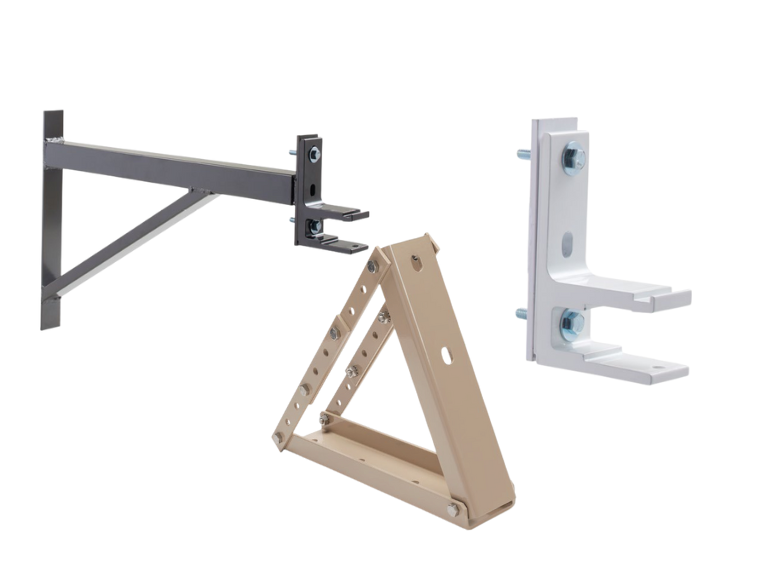
Awning brackets are specially engineered supports, typically made of steel or aluminum, that attach the awning’s frame to a stable surface such as a wall, roofline, or ceiling.
Their job is to transfer the weight of the awning and spread out the forces of movement so the arms, motor, and canopy can perform smoothly for years.
How Brackets Protect Your Awning
The choice of bracket has long-term consequences.
Awnings with proper sizes and anchored brackets prevent sagging, reduce strain on the awning arms, and extend the fabric’s lifespan.
Poorly chosen or installed brackets, on the other hand, can cause wobbling over time, lead to water leaks, or even void the warranty.
An awning set over a poolside lounge, for example, relies on its brackets just as much as one shading an outdoor dining table.
Why the Right Bracket Choice Matters
An awning is only as strong as its connection point to the house.
Strong, well-placed brackets mean your awning can stand up to gusty afternoons, repeated use, and years of family gatherings outdoors.
Weak or mismatched brackets can shorten the life of your investment and create safety risks.
In short, brackets are the backbone of every awning system.
Once you understand their role, the next step is learning about the different types available and how each suits specific surfaces like brick, vinyl, or stucco.
That is where the real decision-making begins.
Types of Awning Brackets for Homes
Not all awnings attach the same way. The right bracket depends on your home’s surface, style, and how you use the space.
Whether shading a deck, setting up a patio office, or creating an outdoor dining spot, the right bracket ensures safety and durability.
Wall-Mounted Brackets
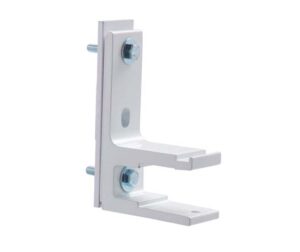
Wall brackets are the most common and often the easiest to install.
They fasten directly into studs or masonry, giving installers clear access to the frame and arms.
Homeowners prefer this option because it simplifies future service calls and provides solid long-term support.
Ideally used: When there is plenty of wall space above doors or windows, such as over patios, decks, and poolside sitting areas.
Roof-Mounted Brackets
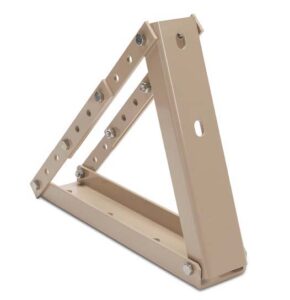
When wall space is limited or obstructed by tall doors and windows, roof brackets provide an alternative.
These brackets are anchored into the roofline, allowing the awning to extend properly without clearance issues. They require careful flashing to prevent leaks and are more labor-intensive to install.
Ideally used: When mounting over sliding glass doors, tall windows, or homes with minimal exposed wall surface.
Bay Brackets
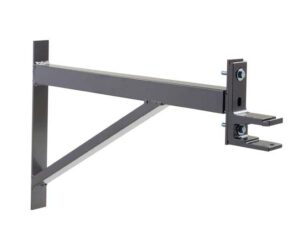
Homes with bay windows or irregular wall surfaces often require bay brackets.
These are angled to bridge gaps and create a secure mount where a flat bracket would not work. Without them, retractable awnings cannot be properly secured over uneven projections.
Ideally used: Above bay windows, angled walls, or homes with architectural projections that make flat mounting impossible.
Steel vs Aluminum Brackets
Steel brackets provide maximum strength and weight capacity, making them well-suited for larger awnings.
Aluminum brackets are lighter and naturally resistant to rust, which is especially valuable in coastal or humid regions.
Material-Specific Installs
Different wall types require different anchoring methods.
- Vinyl siding: needs spacers or backing boards to prevent crushing.
- Stucco: requires careful drilling with masonry anchors and sealing to avoid cracks.
- Brick or block: works best with sleeve anchors or chemical anchors for lasting stability.
- Pergolas or wooden frames: often need reinforcement plates, since softwood may not hold heavy brackets securely.
Adjusting for Wind Zones
In calmer areas, brackets are usually spaced 4–6 feet apart. Coastal or high-wind regions benefit from closer spacing or extra brackets to resist uplift and prevent long-term stress.
The many bracket types highlight the importance of matching hardware to your home’s design and outdoor needs.
But choosing is only half the story, because installation can make or break the system. This leads to the question of DIY versus professional installation.
Helpful Resource → How Retractable Awnings Work + Key Features Explained
Why DIY Awning Brackets Often Fail
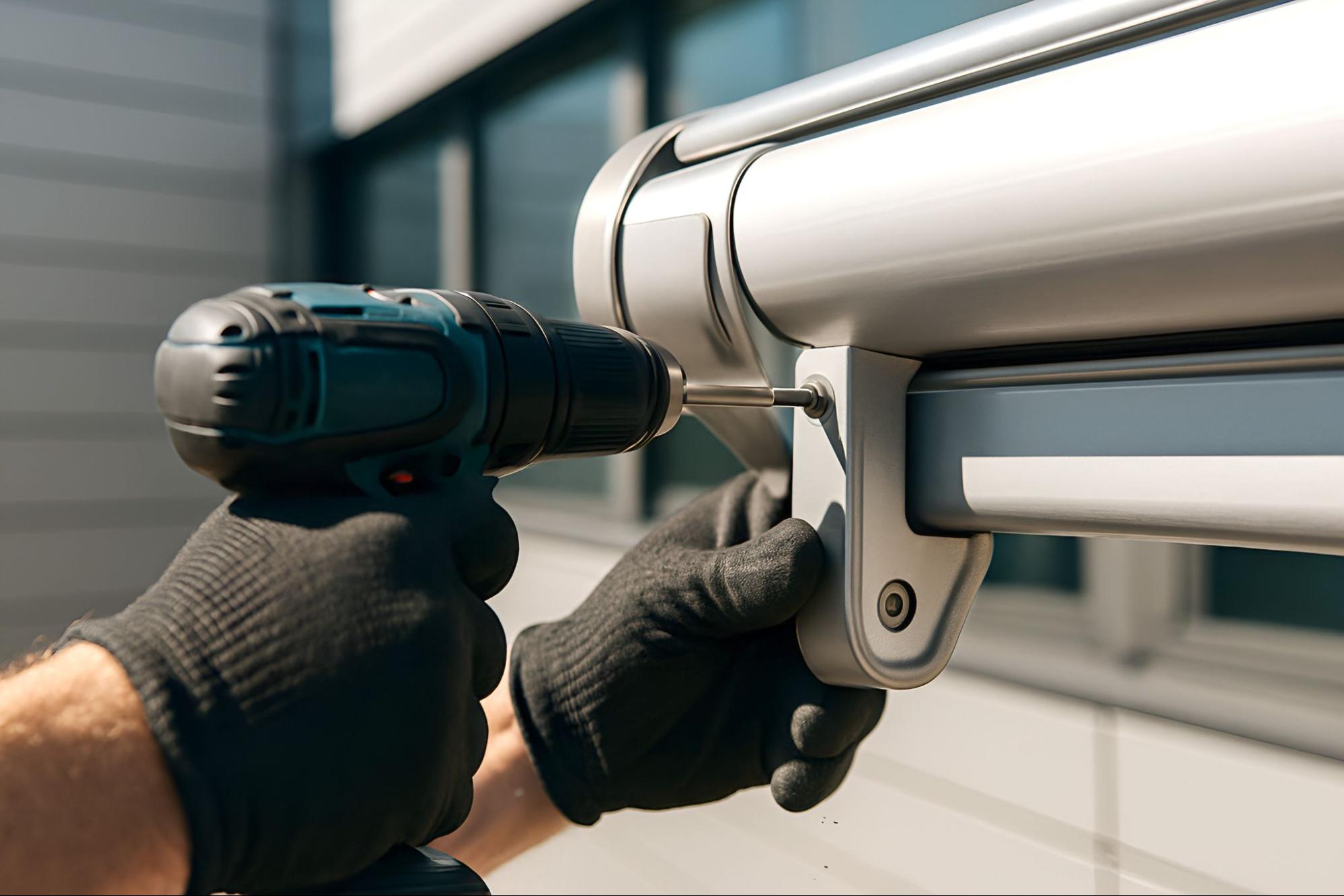
It’s tempting to think installing awning brackets is a simple weekend project. After all, it looks like just a few bolts and a level.
But in reality, bracket installation is where many do-it-yourself projects go wrong, often with costly consequences.
The Risk of Weak Surfaces
Drilling into fascia boards, drywall, or softwood may seem convenient, but these surfaces are not designed to bear the weight of a retractable awning.
Brackets mounted this way can loosen, sag, or pull away over time.
Toggle Bolts and Shortcuts
Homeowners sometimes rely on toggle bolts or light-duty anchors instead of proper lag bolts.
These may hold briefly but often fail once the awning is extended across a patio or deck, especially in windy conditions.
The Problem with Cheap Kits

Low-cost universal kits promise easy installation, yet they rarely fit well or carry the strength needed for larger awnings.
Misaligned holes, flimsy materials, and poor finishes make them unreliable for long-term use.
Hidden Costs of DIY Mistakes
Skipping essential steps like sealing around brackets can allow water intrusion behind siding or masonry.
Worse, improper installation often voids the manufacturer’s warranty, leaving the homeowner responsible for repairs or replacements.
Why Professionals Do It Better
What To Expect At Your Marygrove Awning Installation
Professional installers know how to locate studs, reinforce weak areas, and align brackets precisely. This ensures safety, protects warranties, and extends the life of the awning.
DIY may seem like a money-saver, but the risks of misalignment, water damage, or early failure far outweigh the benefits.
The smarter move is to rely on professional installation and avoid problems before they start.
Next, let’s explore common bracket problems and the practical fixes homeowners can use to keep their awnings secure.
Common Awning Bracket Problems and How to Fix Them

Even with the right type of bracket, challenges can arise during or after installation.
Most issues aren’t caused by the awning itself but by small oversights in how brackets are mounted. Addressing them early ensures your awning performs safely and lasts for years.
Clearing Gutters with Offset Brackets
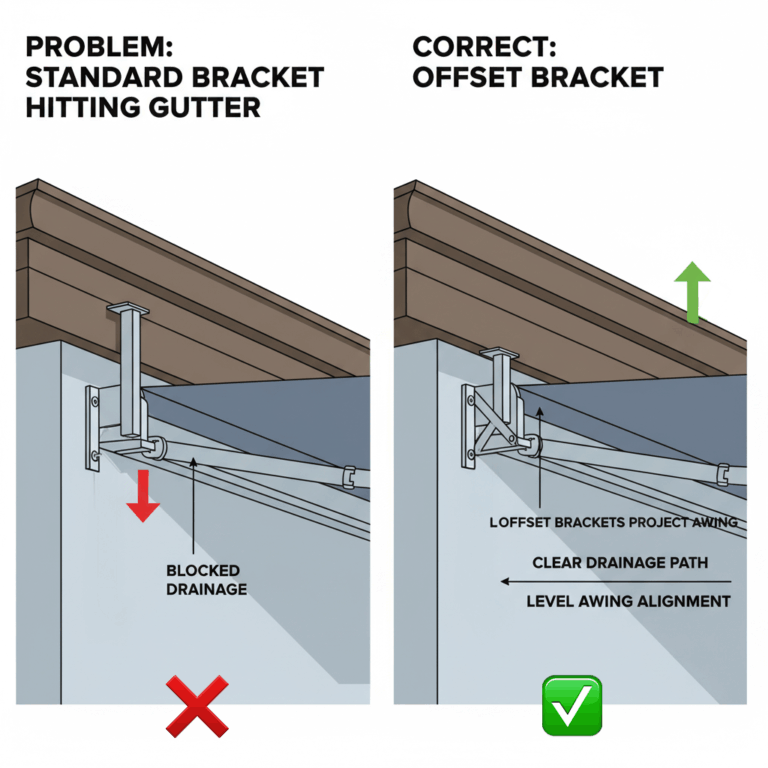
One of the most common problems is gutter interference.
Standard brackets can’t always clear the space, which is why extension or offset brackets are designed to project the awning away from the wall.
This simple fix keeps the awning level while preserving drainage.
Adjusting Placement for Evening Sun
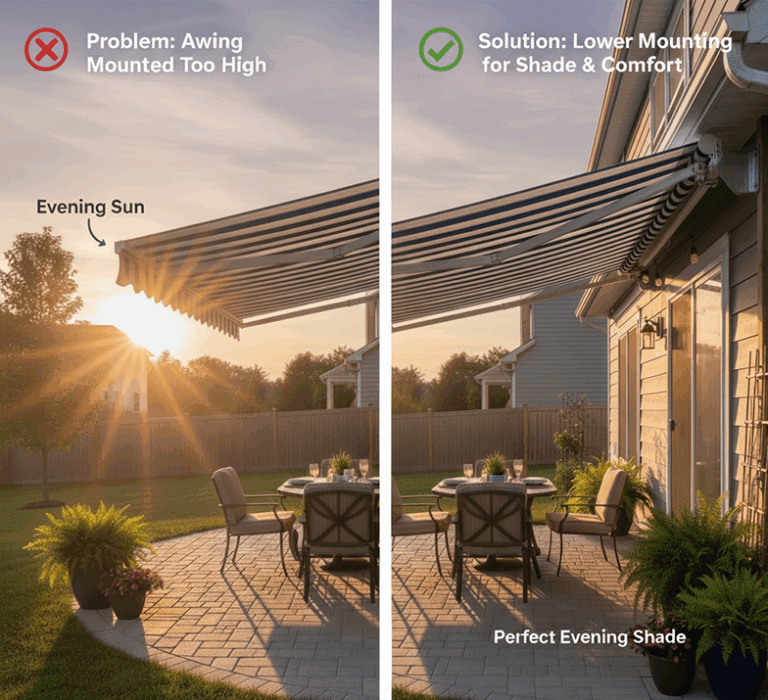
Bracket placement also affects shade coverage.
In hot climates, installers may lower brackets slightly to improve afternoon or evening shade over a patio or outdoor dining area.
This adjustment doesn’t change the awning’s strength but makes a noticeable difference in comfort.
Headroom Issues Solved by Bracket Choice
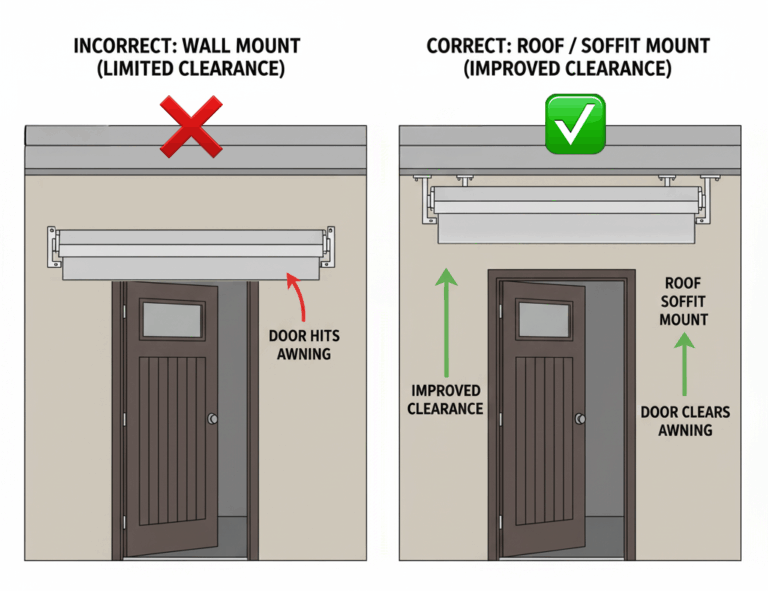
Limited headroom above a door or window can make awning placement tricky.
Switching from wall brackets to roof or soffit mounts can create the clearance needed without compromising stability.
Using Wind Sensors for Added Protection
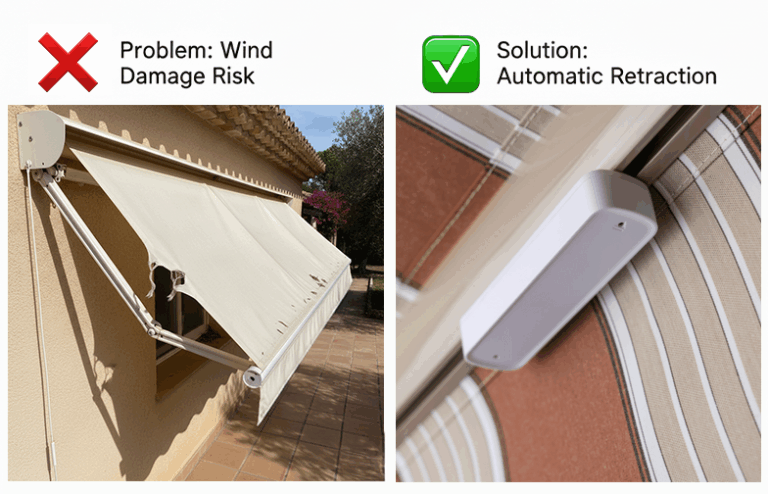
Even strong brackets can’t fight nature alone.
Pairing them with wind sensors ensures that in strong gusts the awning retracts automatically, reducing the risk of bracket stress or structural damage.
Why Universal Kits Don’t Always Fit
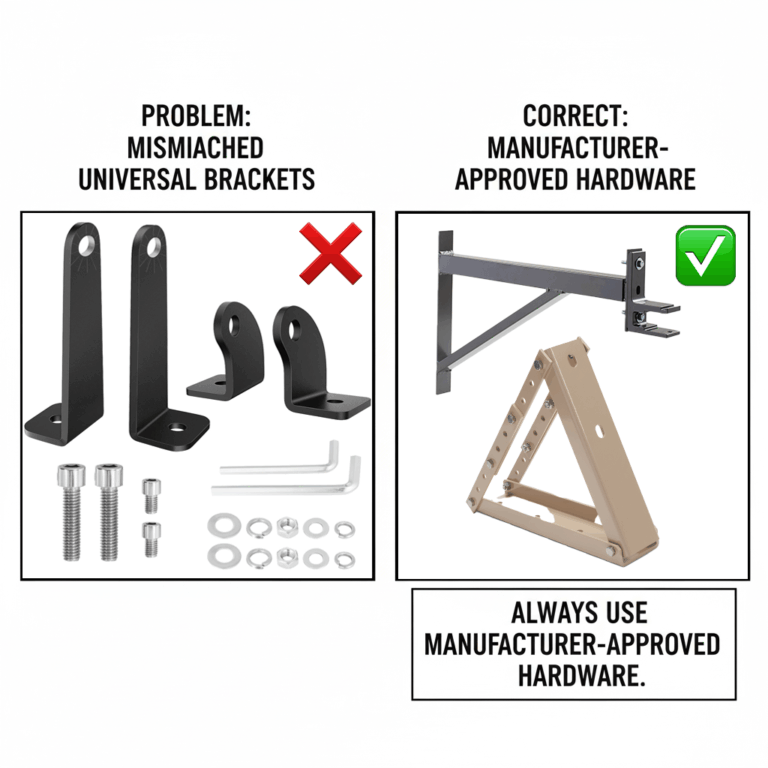
Off-the-shelf universal kits often misalign with real-world conditions, leading to wobble or uneven extension.
Using manufacturer-approved hardware is the most reliable solution.
By addressing these common bracket challenges early, you ensure your awning stays stable, safe, and reliable.
With the right fixes, your outdoor space remains a comfortable retreat season after season.
Helpful Resource → How Far Can a Retractable Awning Extend?
Bringing It All Together: Secure Brackets, Lasting Shade

Awning brackets may not be the most visible part of your outdoor setup, but they are the foundation of its safety, durability, and comfort.
From wall mounts to bay brackets, each option has a role to play depending on your home’s structure and the way you enjoy your outdoor spaces.
Choosing wisely and ensuring proper installation prevents sagging, water damage, and costly repairs, allowing your awning to deliver reliable shade for patios, decks, or poolside seating for years.
Whether you dream of quiet afternoons under a retractable canopy or lively dinners outdoors, strong brackets make that experience possible.
To ensure your awning is built to last, explore Marygrove’s durable retractable awnings, installed by experts who understand the importance of secure, long-lasting brackets.


